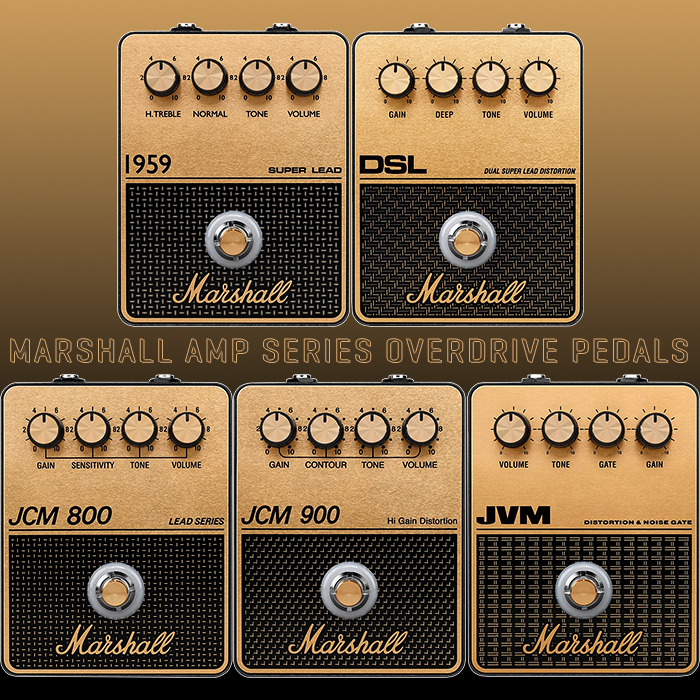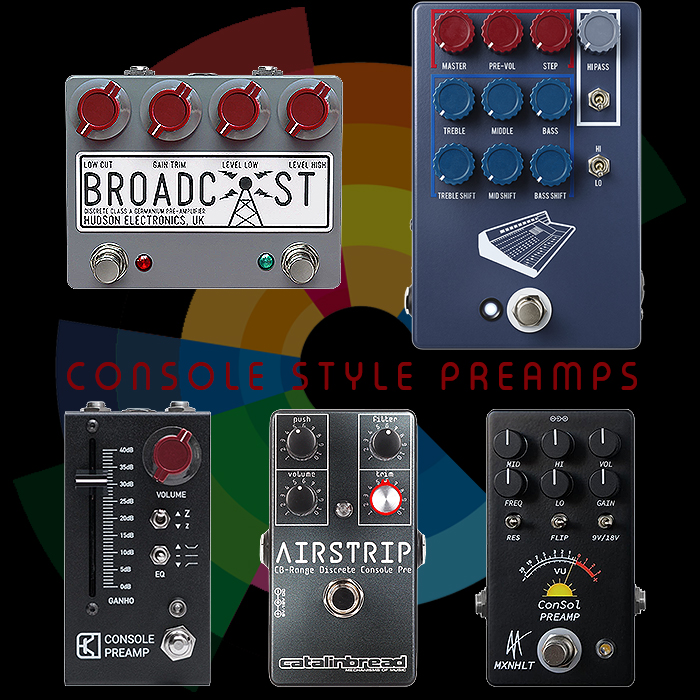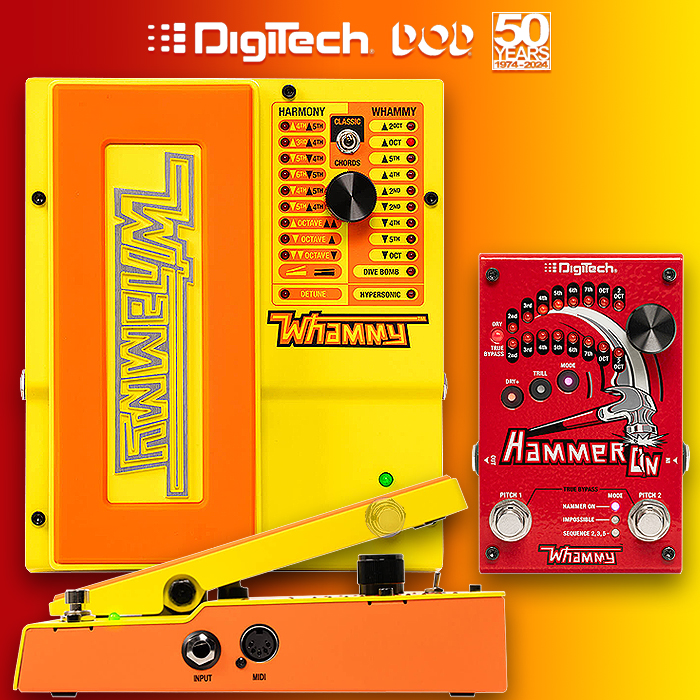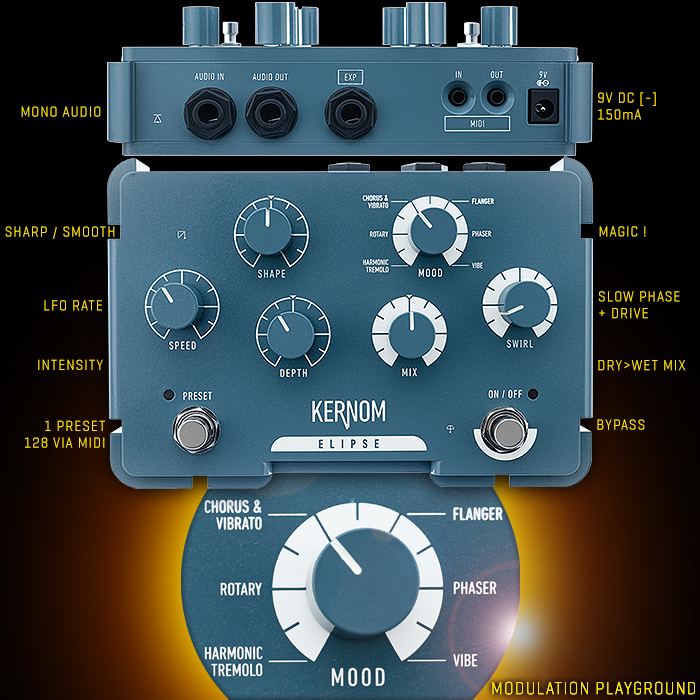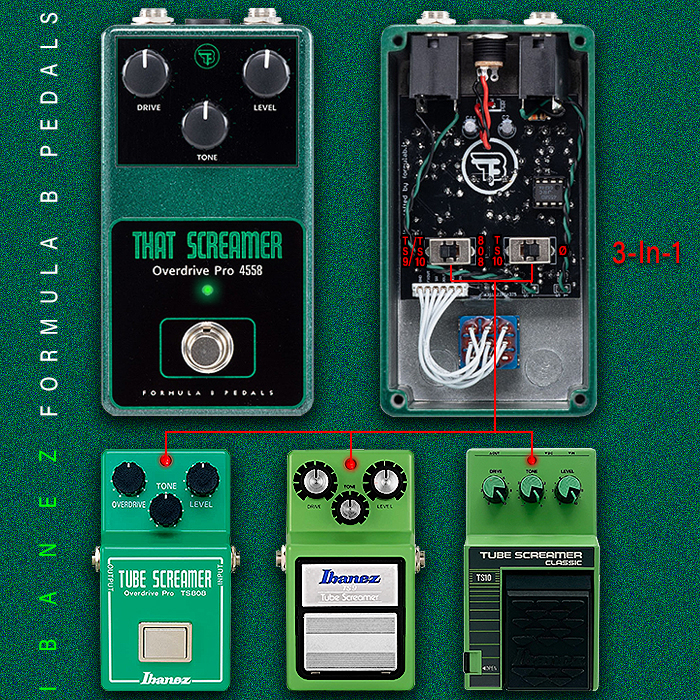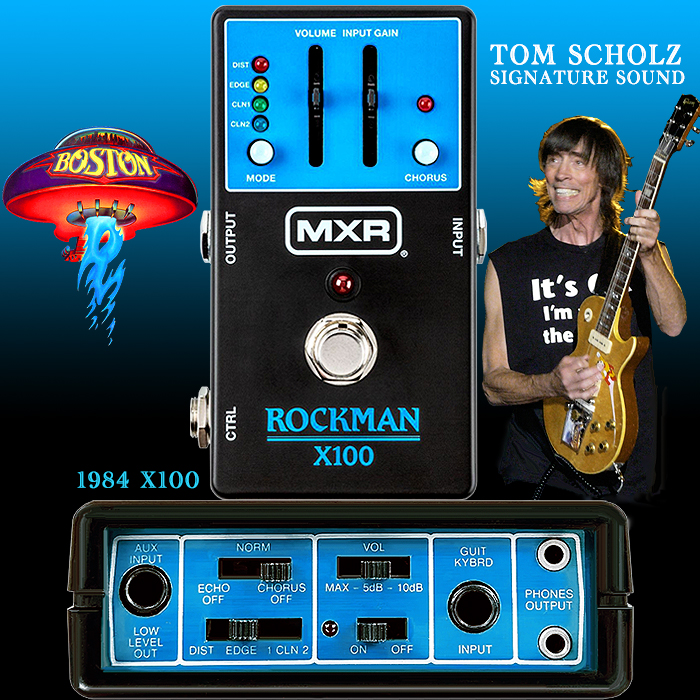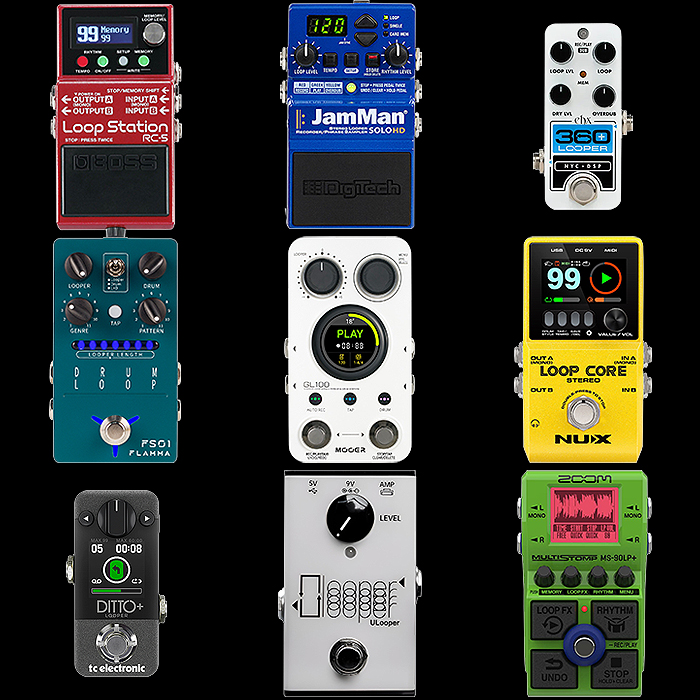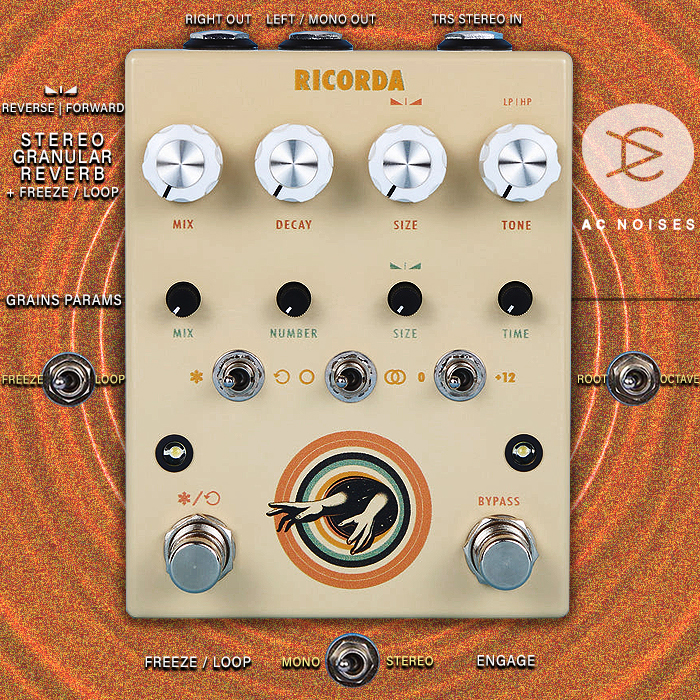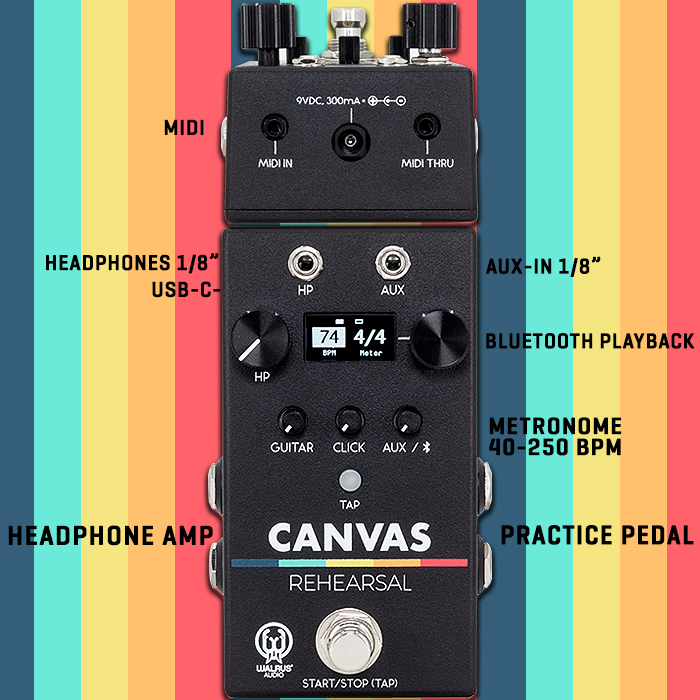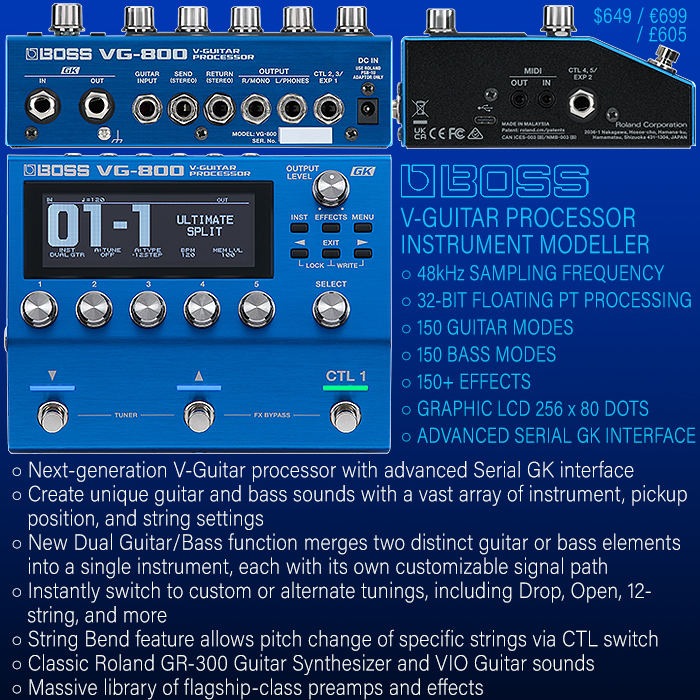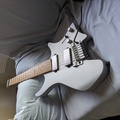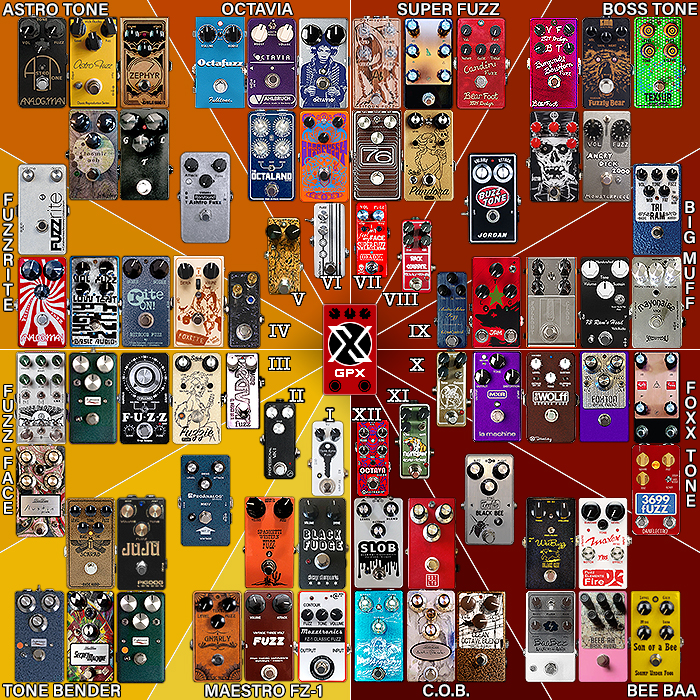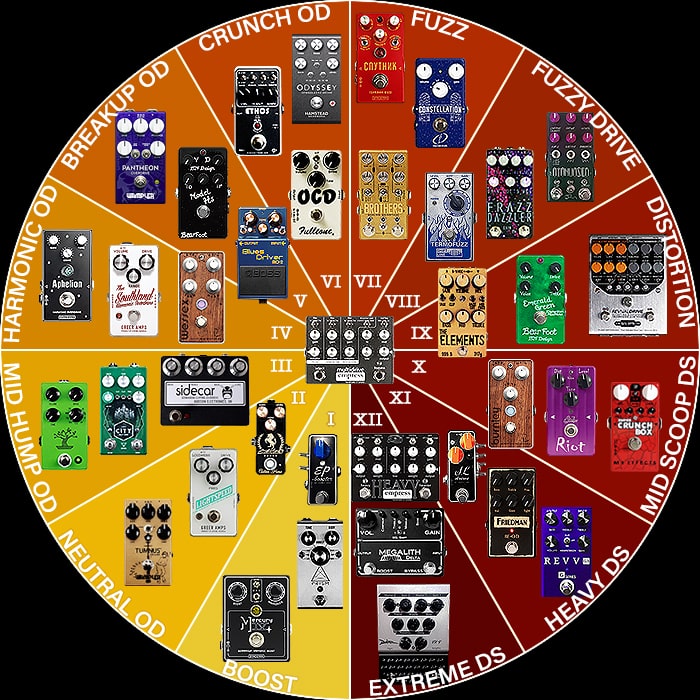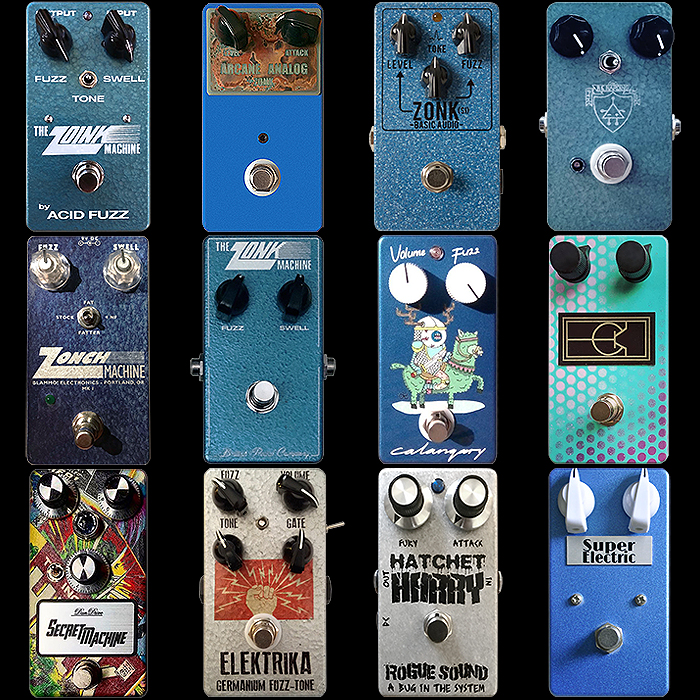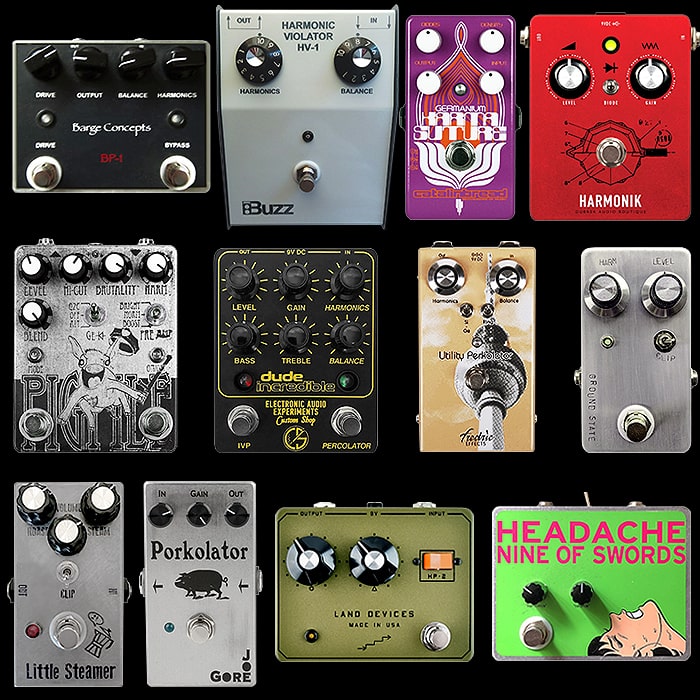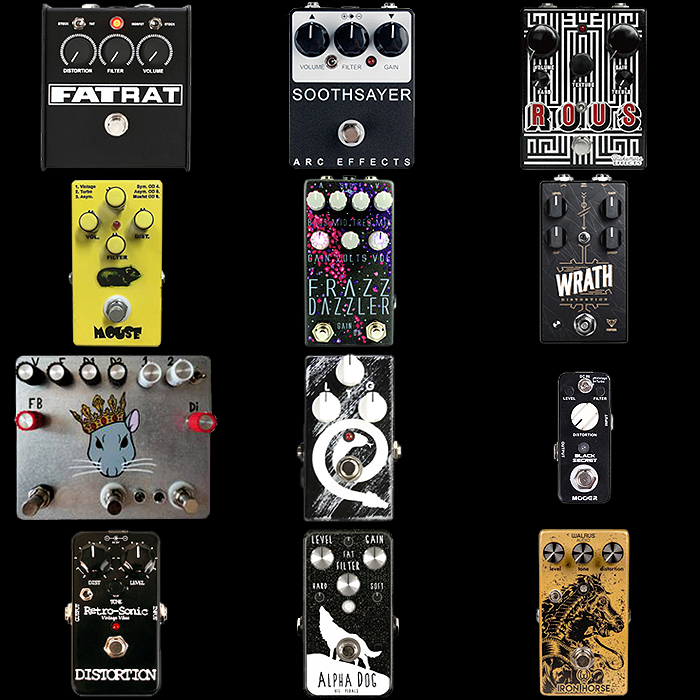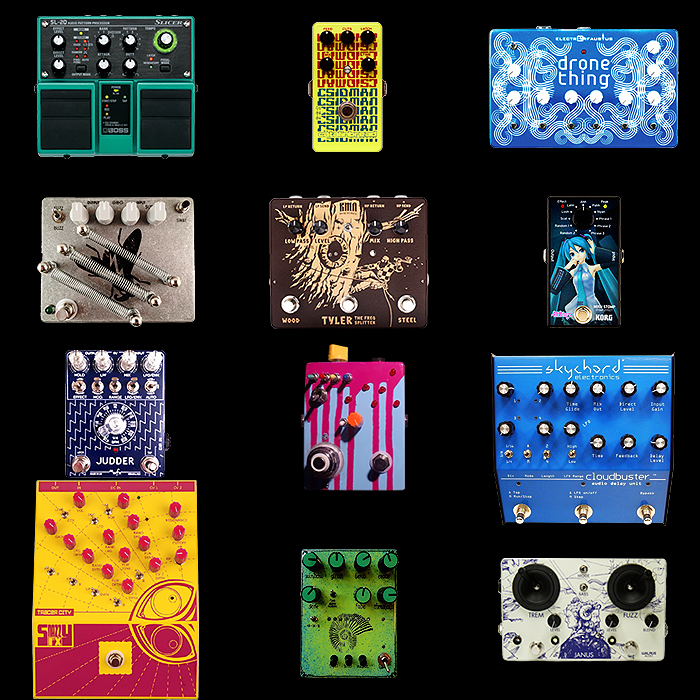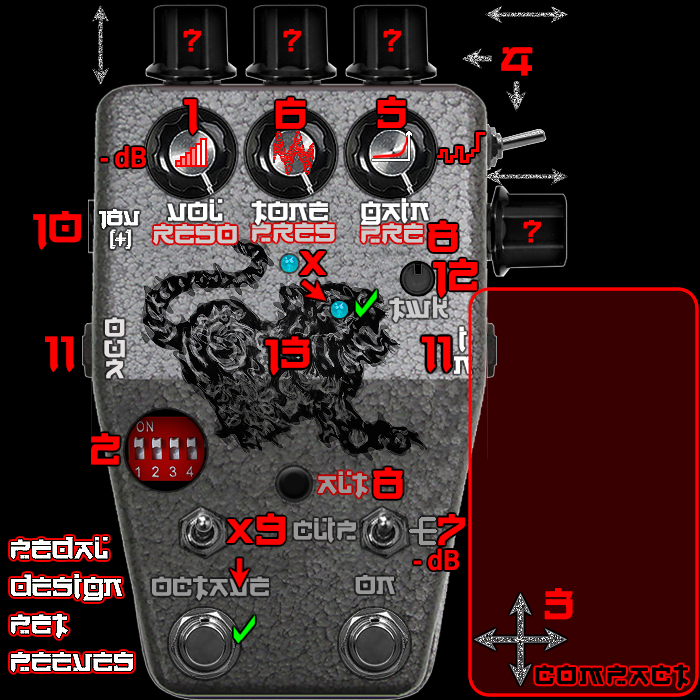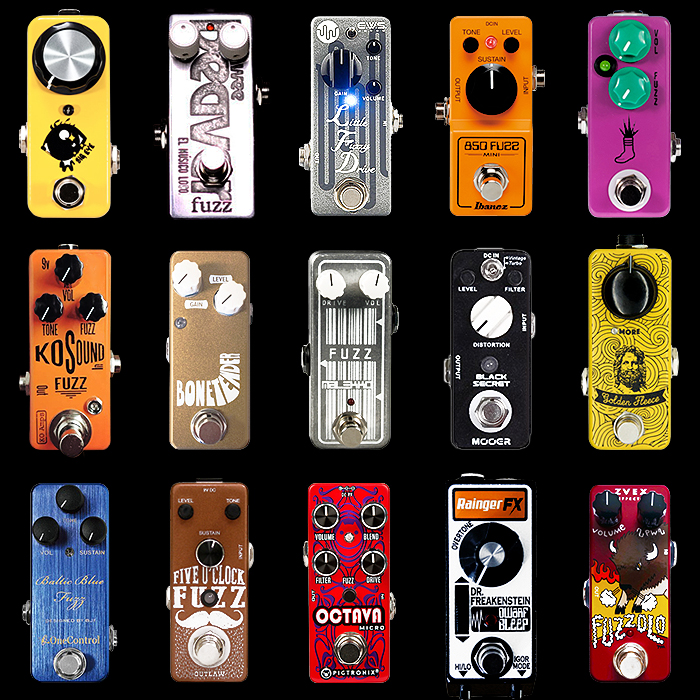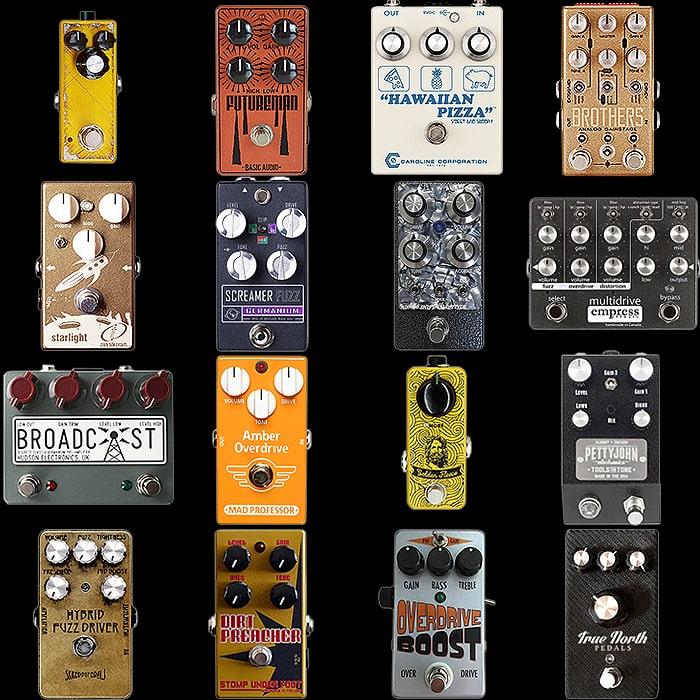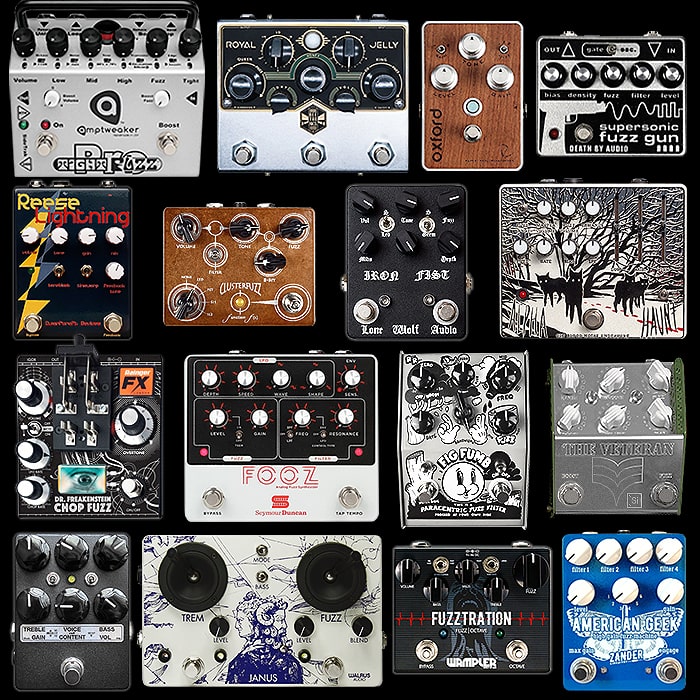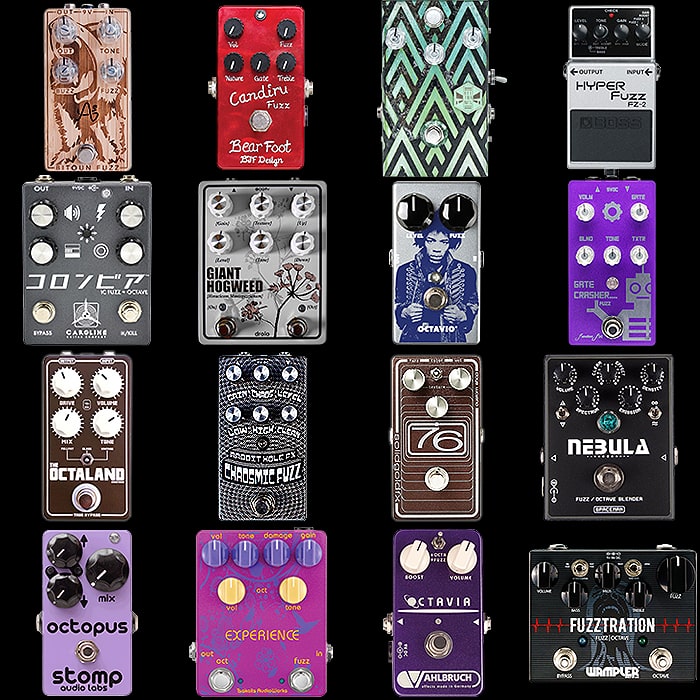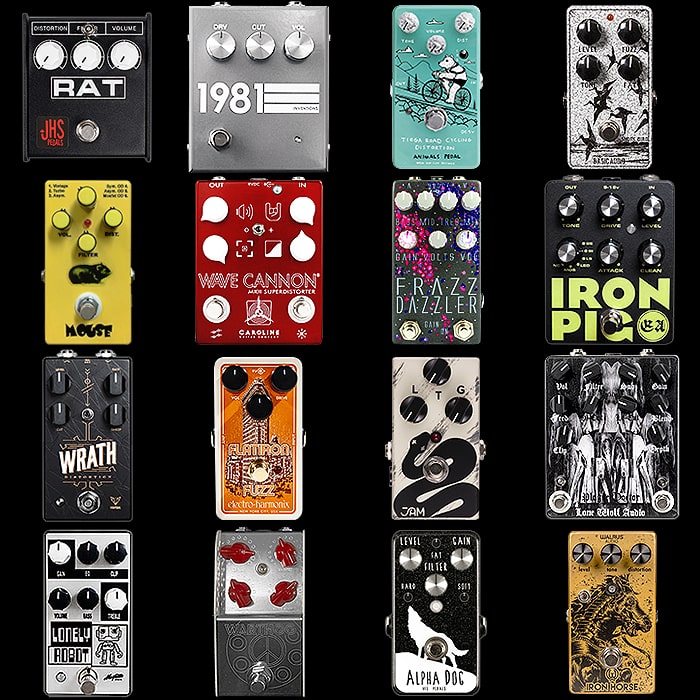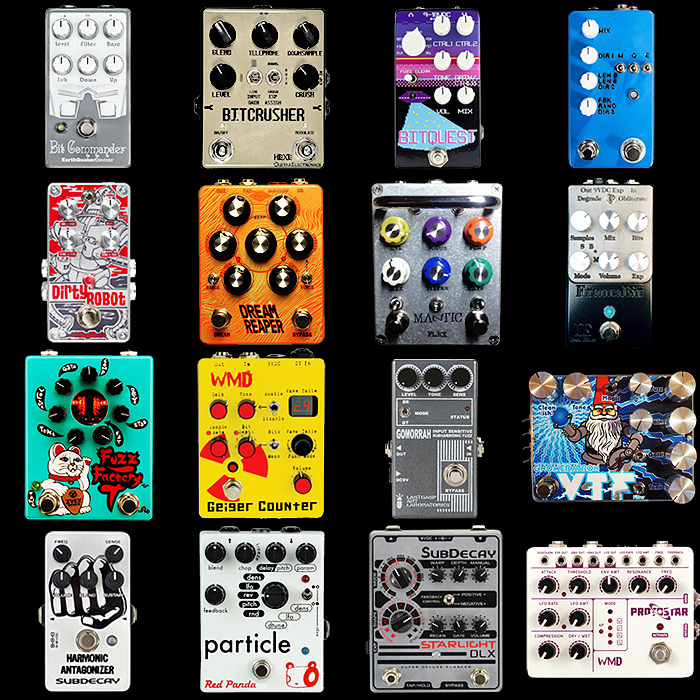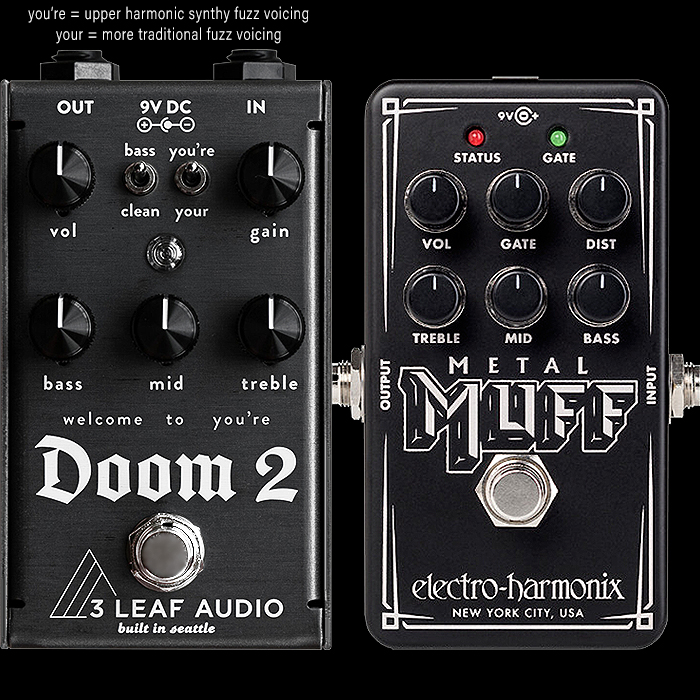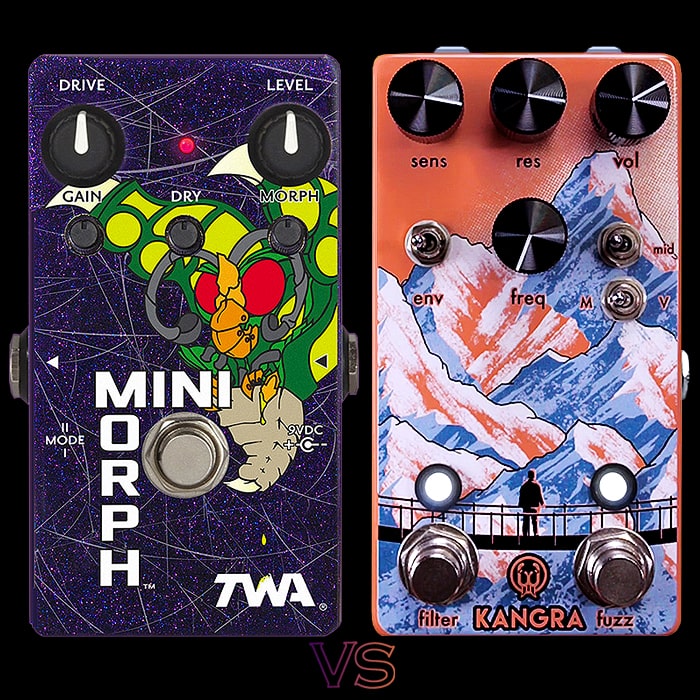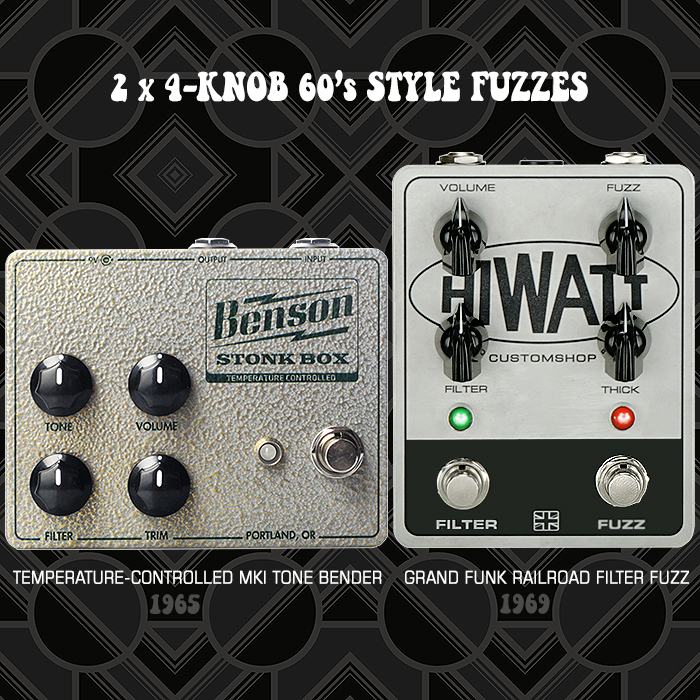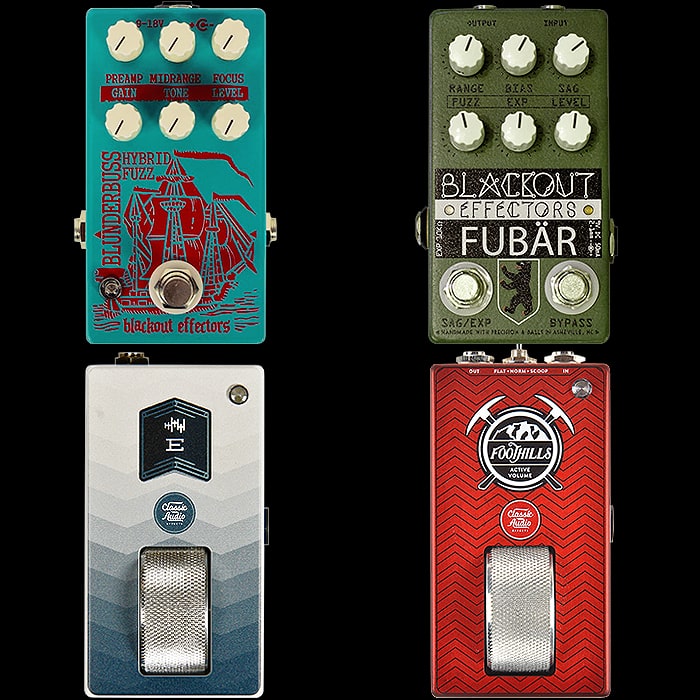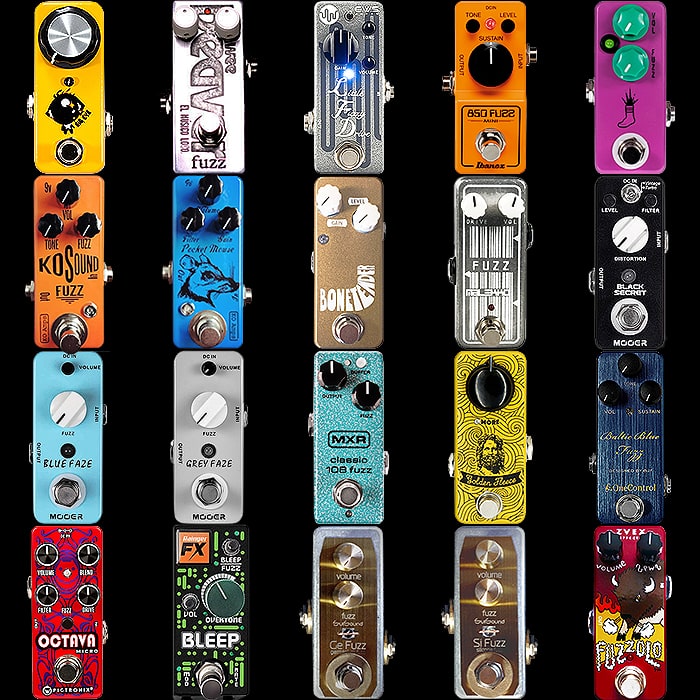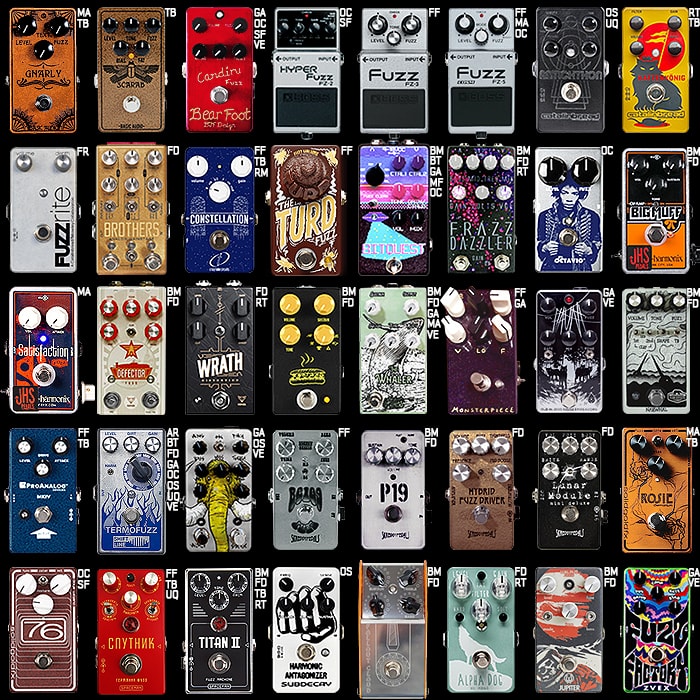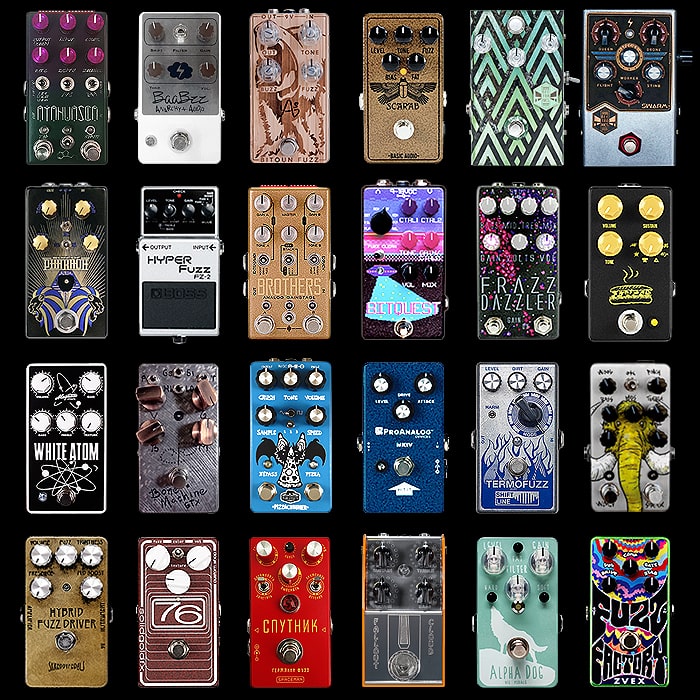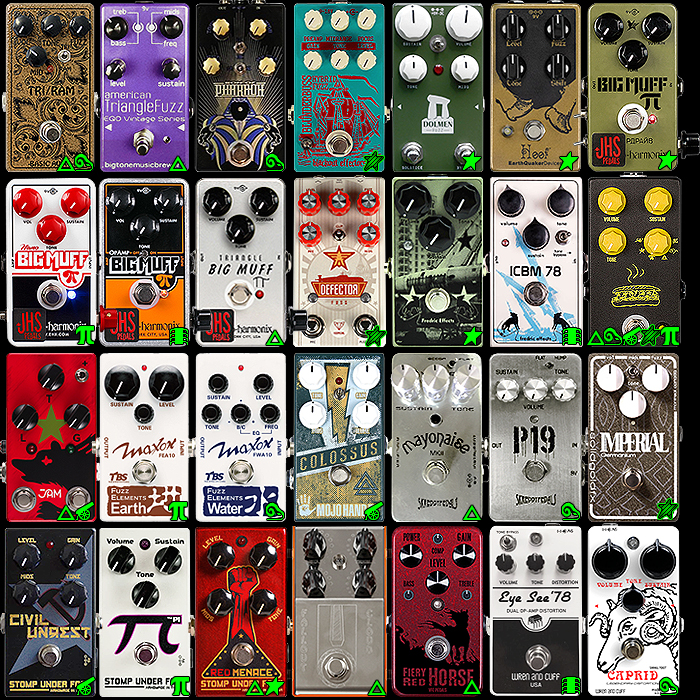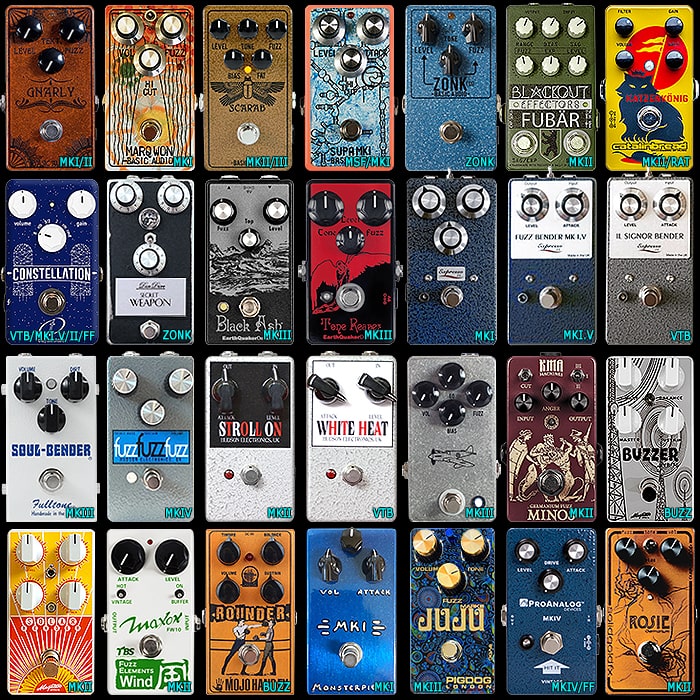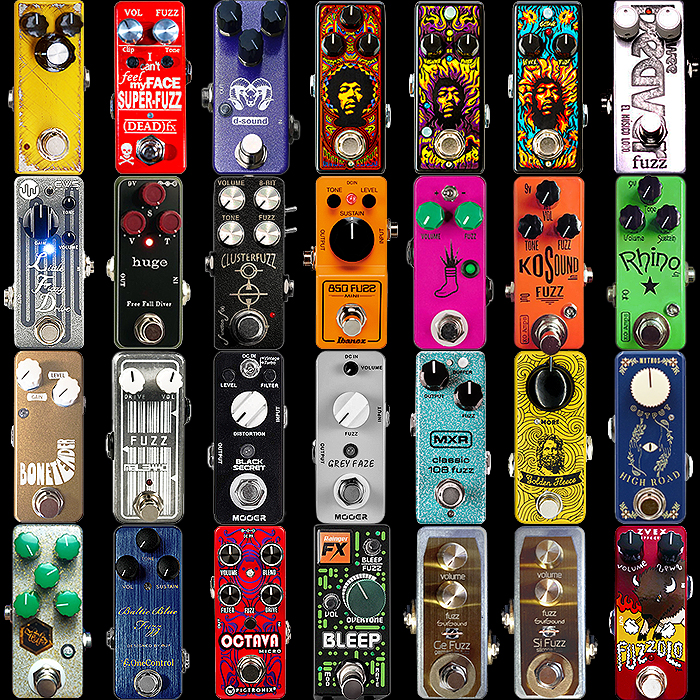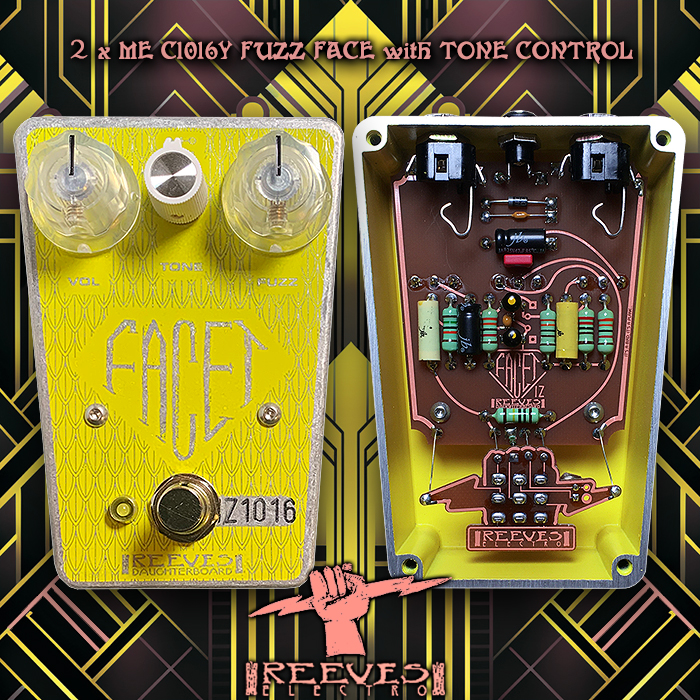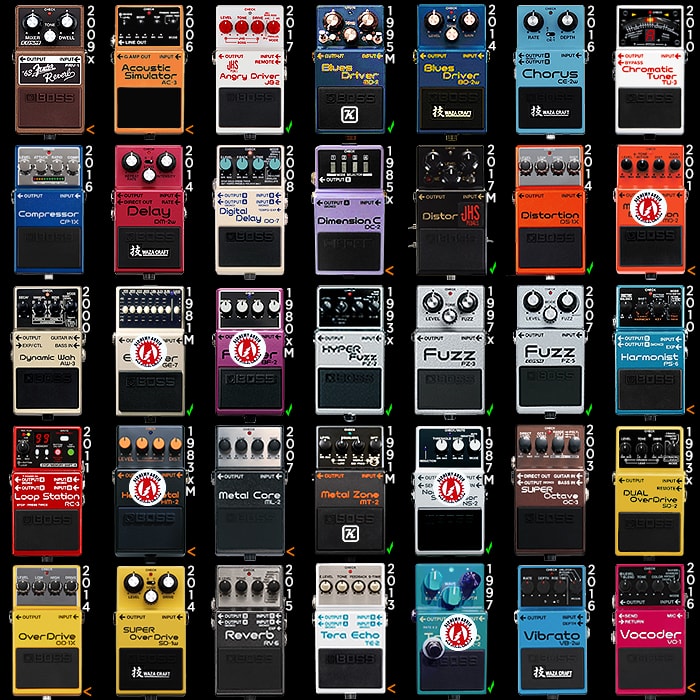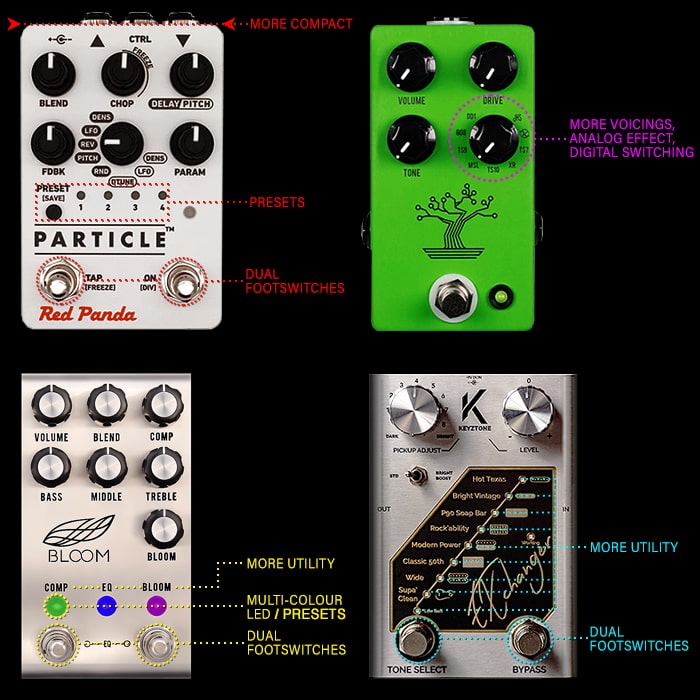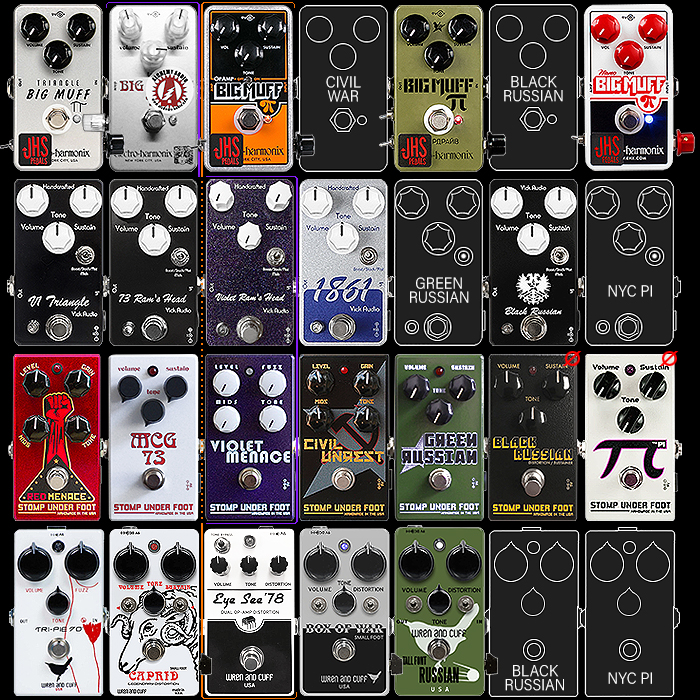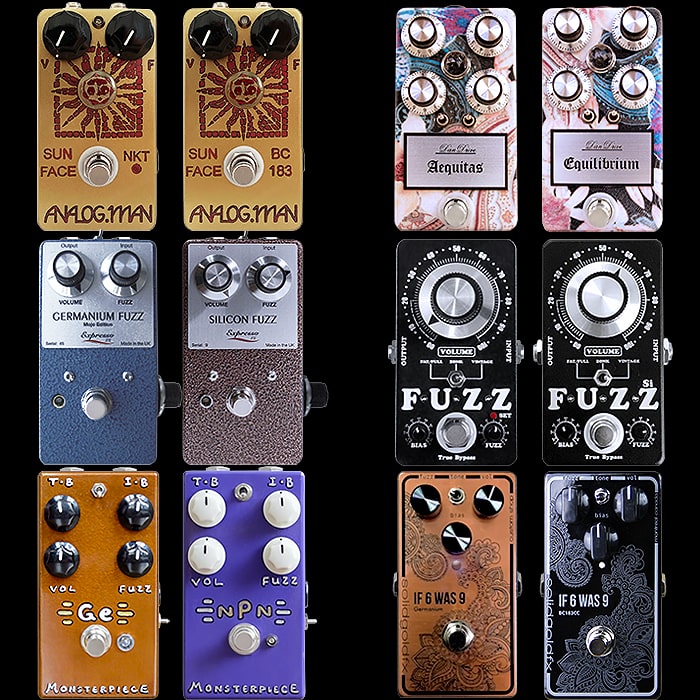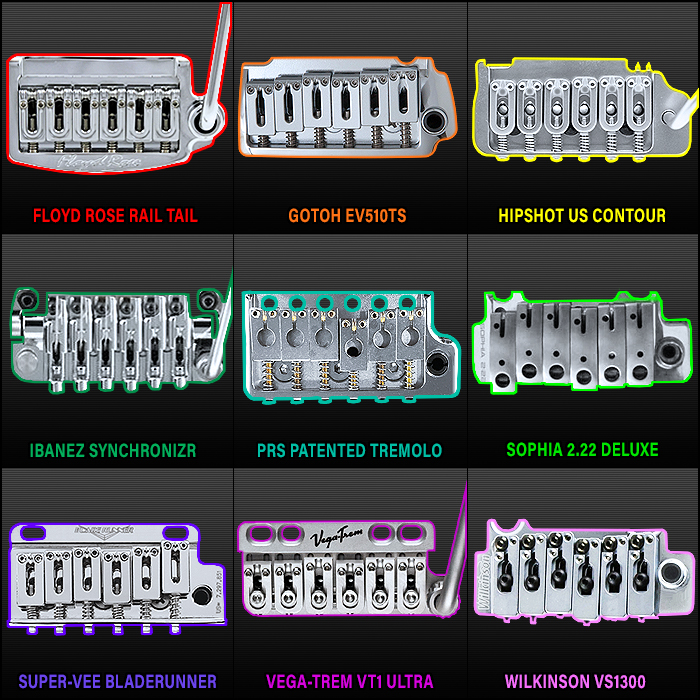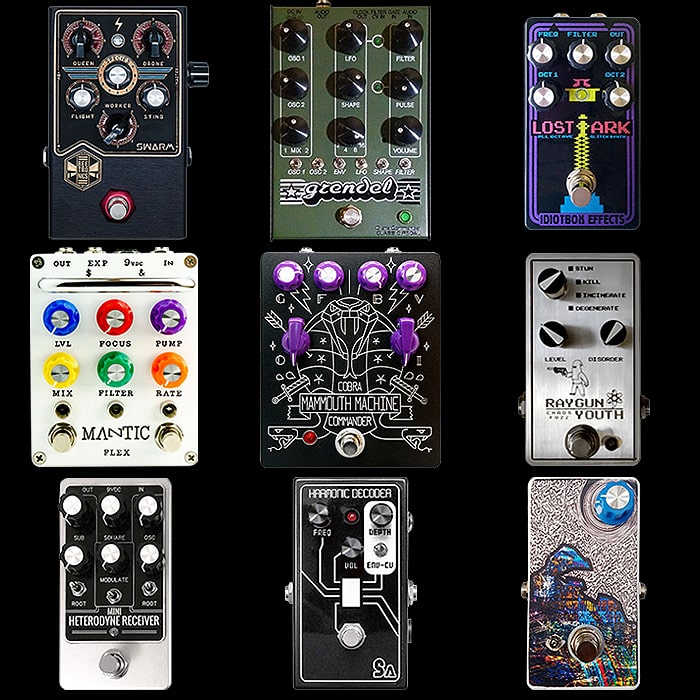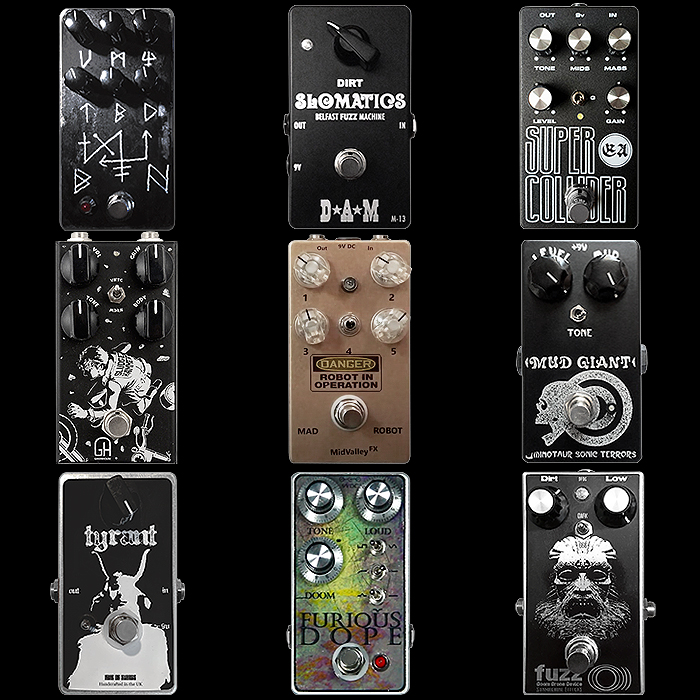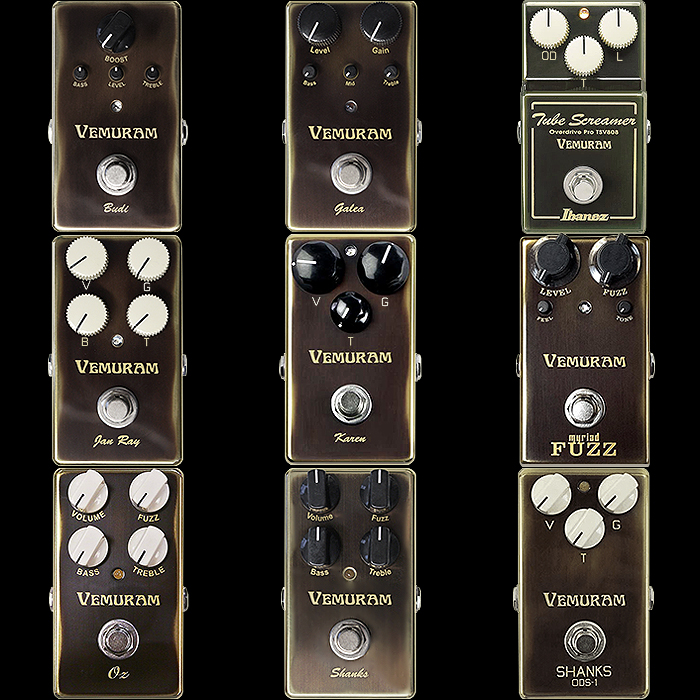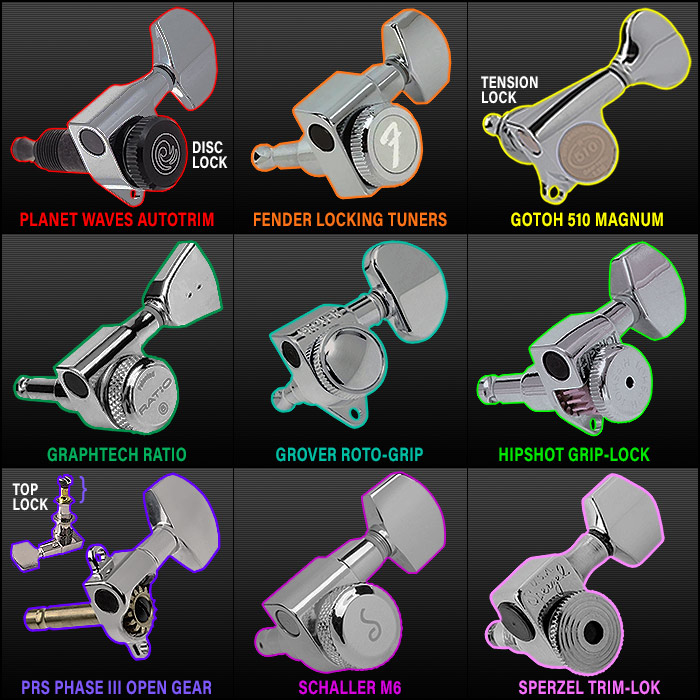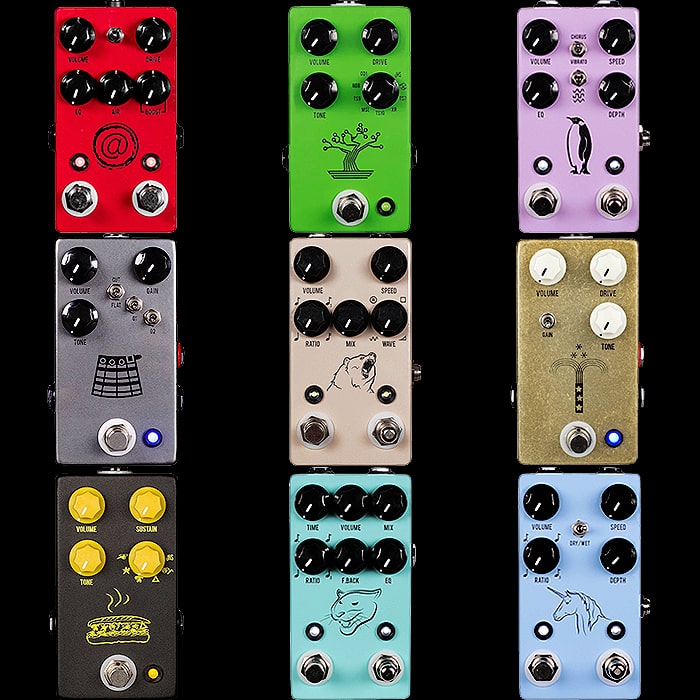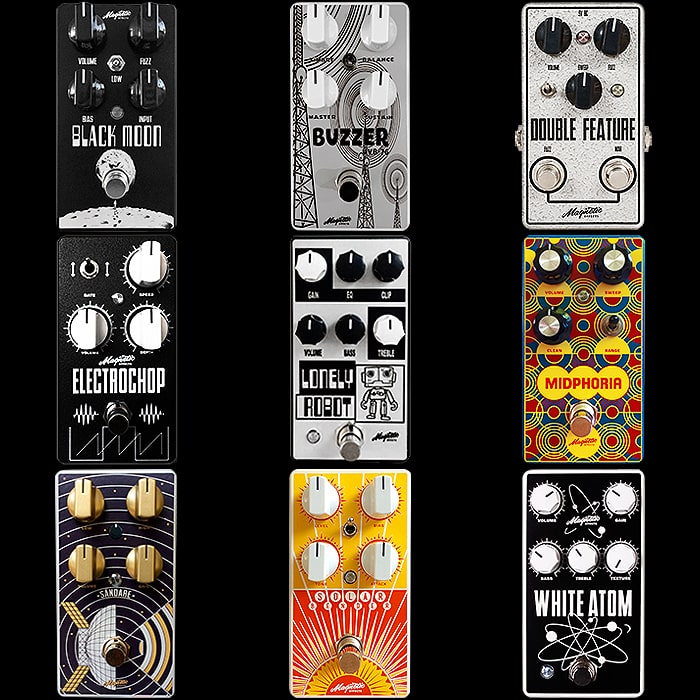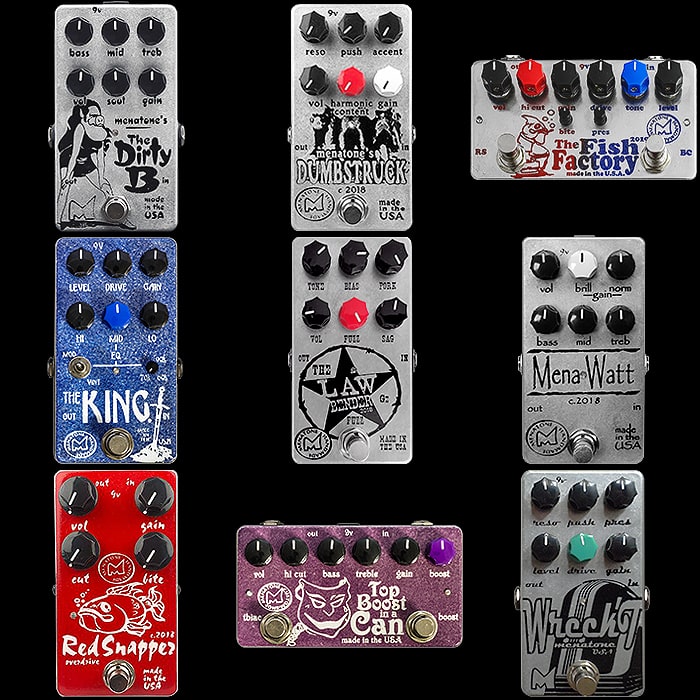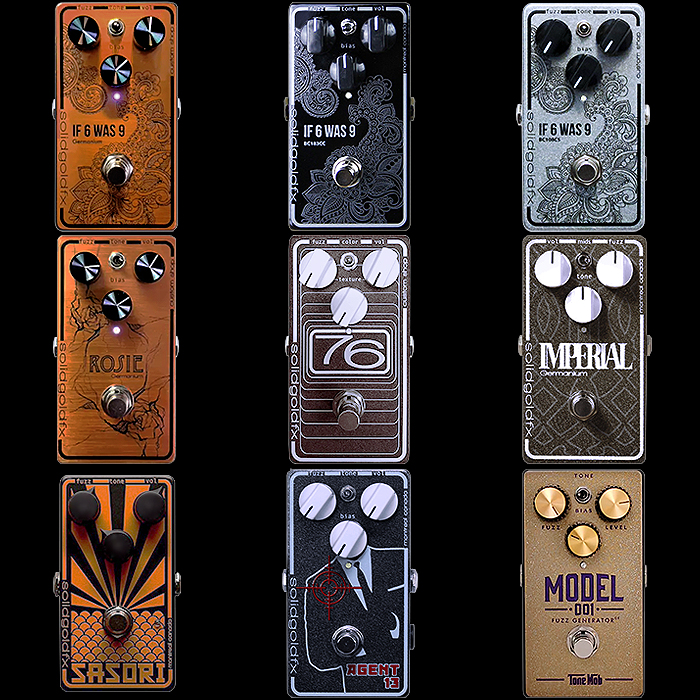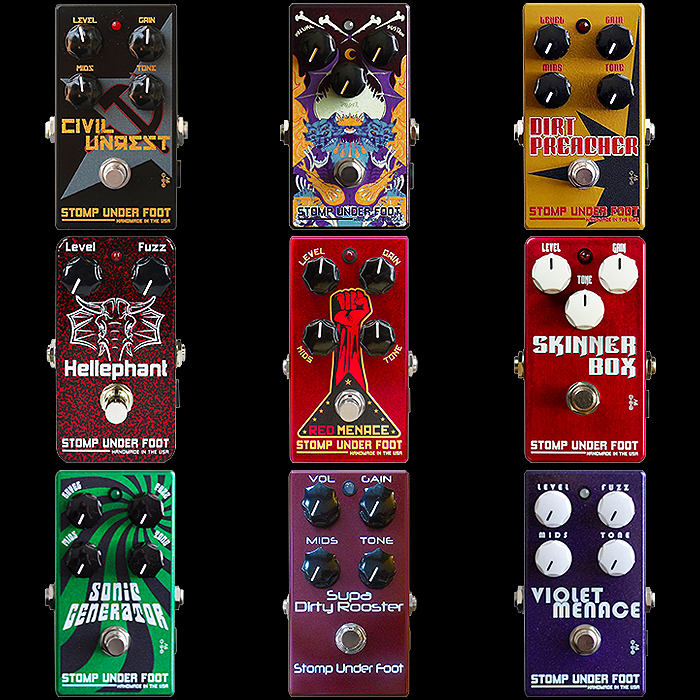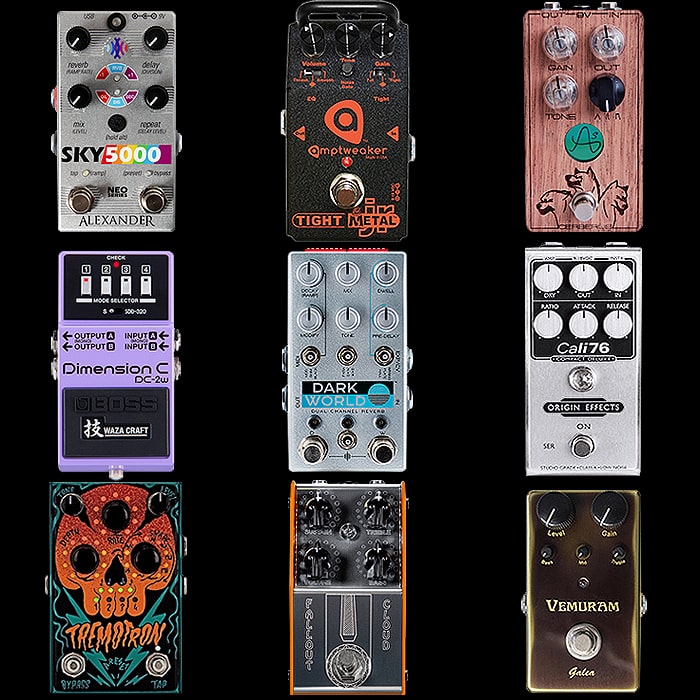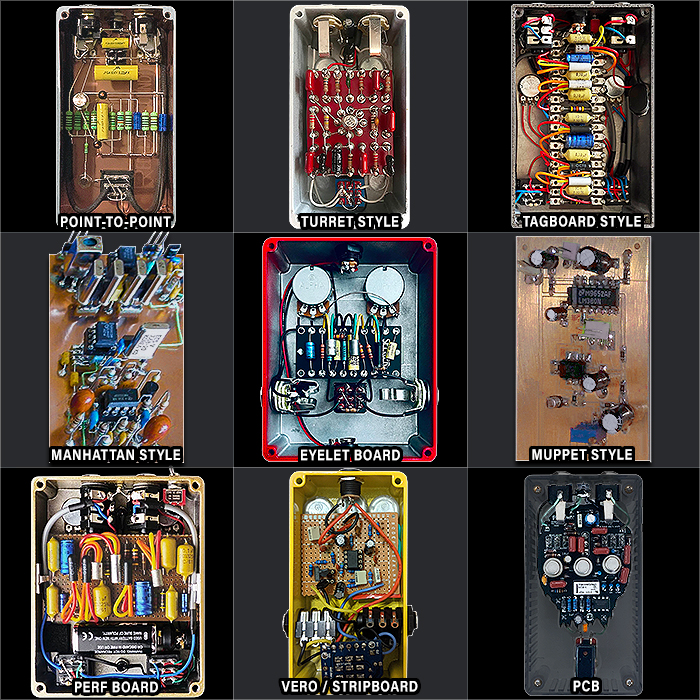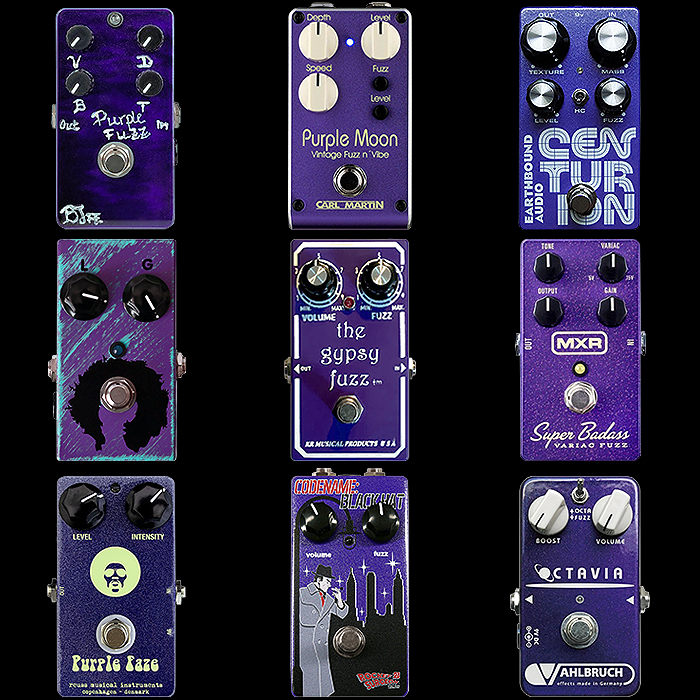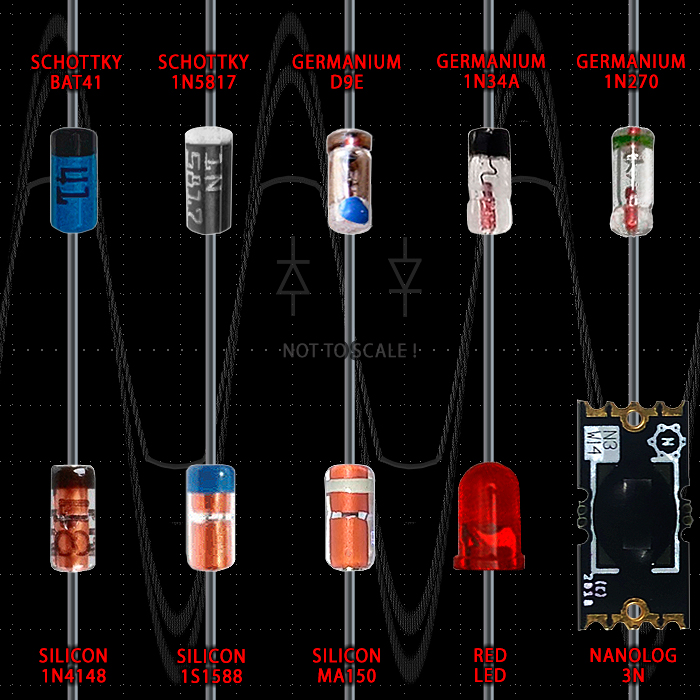A Brief Hobbyist Primer on Key Fuzz Transistor Types and Chronology
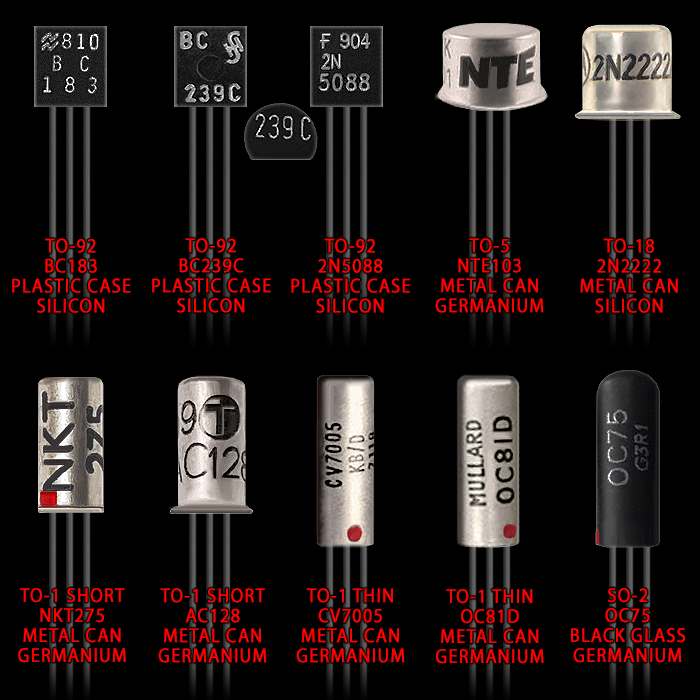
I started down my Fuzz ToneQuest at the beginning of 2018 - where I already had a few fuzzes, but determined that over the course of the year I would acquire around 30 of the very best fuzzes available across the different fuzz families. My aim was to get the bulk of my research done in 2018 so I could move on to investigating other pedal genres - like say Glitch/Granular Synthesis/Micro Looping.
As it happens though - I got to twice as many fuzzes as intended in 2018, and have acquired even more in 2019 - bringing that part of the collection to over 150 pedals as of this moment - split fairly evenly across all the major genres - Tone Benders, Fuzz Faces and Big Muffs, alongside Octave Fuzzes, Rats, Oscillating Fuzzes, Modulated Fuzzes and various other unique oddities and specialist Fuzzes. In the process of acquiring said fuzzes and building up this part of the Tone Library - I have developed a healthy fascination for the number and variety of different Transistors used / utilised for different purposes - so this post is really just a reference resource for and from my experience of different Fuzz Transistors to date - it is not intended to be any sort of comprehensive record of every single useful transistor type - just a record of my own encounters and a sort of notebook of what is generally out there and what I like in particular - I will treat it as a Work-in-Progress and edit and add periodically. Some of this data may not be 100% accurate as there are several idiosyncrasies within the transistor category - including gooping, counterfeiting, re-purposing and various inconsistencies in manufacturing and labelling.
Several of the established manufacturers were rather haphazard in their branding and quality control - meaning that the same transistor type often appeared in different casings, with different product codes / references - or on occasion no references at all. Lots of these operations did a fair amount of OEM manufacture also - making products for different companies - which means tracing the pedigree and provenance of several transistor families quite a tortuous and frequently nigh impossible process. There are also lots of Eastern European and Russian re-makes of popular types - often indistinguishable from the originals, while other are plainly counterfeit or mis-identified with the aim to confuse and mis-lead builders and collectors.
Because of nuances in manufacture and source materials - the same batch of transistors can perform to very varying degrees - and even those which measure the exact same hFE value can sound significantly different - so there is really an artisan quality to many of the aspects of ’Transistor Wrangling’ and the process is largely down to the Ears and Musicality of the builder.
I won’t dwell too much on technicalities here - as much of that is over my head in any case - I’m just more interested in what is being used and roughly why!
One question I’ve frequently had about various dots on Transistors is beautifully succinctly answered by the following excerpt from the Internet!":
"A red dot or other colour dot on the side of the transistor case only denotes the collector lead. A red spot elsewhere on older transistors - usually on the top - used to indicate the goodness/gain/frequency response of the device. Where the red spots - were considered the best, white spots - good, and unmarked signified low gain"
In my image at the top of this article I identify some of my favourite types to date - in as great a variety of different casing types as possible - and indicate their various uses (Note that Transistors are not pictured exactly to scale):
BC183 : TO-92 typical Silicon Transistor Plastic Casing
The earliest Silicon Fuzz Faces were quite distinct from the original NKT275 Germanium variety - being more strident and aggressive - and utilising BC108C and BC109C transistors, the third variety to be utilised was the BC183L which sounded a lot more like the warmer Germanium. Several pedal builders now specialise in utilising BC183 transistors to get them to sound as close to the original NKT275's as possible. The BC183 is my own favourite variety for Silicon Fuzz Faces.
BC239 : TO-92 typical Silicon Transistor Plastic Casing
The BC239 seems to have become fairly synonymous with Ram's Head style Big Muffs - largely taking over the now almost impossible to source original 2N5087 type transistors. I have several Big Muff style pedals which make use of the BC239.
2N5088 : TO-92 typical Silicon Transistor Plastic Casing
This was the original go-to Big Muff transistor - suitably high gain, so very useful for those applications. Nowadays this seems to have become the perfect all-rounder Silicon Transistor - and is used in all manner of different fuzz varieties as well as just straight up distortion pedals too. When allied with the right components - this particular transistor seems to be able to do almost everything!
NTE103 : TO-5 Germanium and Silicon Transistor Metal Can
This was paired with the NTE123 Transistor (Silicon) in Cesar Diaz's cool Texas Square Face Fuzz. Therefore quite apart from the usual NKT275, AC128 and CV7005 Transistors you tend to find in your typical Germanium Fuzz Face pedals.
2N2222 : TO-18 Germanium and Silicon Transistor Metal Can
You don't typically see a lot of Silicon transistors in metal can casings - but those there are tend to be found in TO-5 and TO-18 formats. In this instance found in several interesting fuzz pedals - including the recent Spaceman Gemini IV. I believe this is another fairly universally used Silicon transistor with several viable applications - not quite as popular as the 2N5088 - but still in pretty broad distribution.
Newmarket NKT275 : TO-1 Short typical Germanium Transistor Metal Can
The celebrated Newmarket 275's supposedly started off as a more economic (manufacturing efficencies) version of the AC125. Yet by and larger most Fuzz connoisseurs much prefer the original cheaper NKT275's over the AC125's and AC128's. Mike Piera has tried dozens of varieties and has been unable to get the same tonality out of every AC128 variety he has tried. That said - there are numerous other great sounding AC128 fuzzes out there - so complementary component selection is obviously critical - and this area is of course highly subjective and owes much to personal preferences and tased. Note that Newmarket 275 often abbreviated to NKT275 is actually quite different to the many 'NKT275' copies which currently proliferate the market. Because of manufacturing inconsistencies and differing metal case use - most tend to stick by the original short-form TO-1 style 275 transistors - the thin long versions are all more recent additions - made variously in the USA and Eastern Europe.
AC128 : TO-1 Short with Rim/Skirt - typical Germanium Transistor Metal Can
As just mentioned - this was supposedly the forebear of the NKT275 - and there are some who prefer it and use it over and above the period-correct NKT275's. Supposedly a number of the earliest Fuzz Faces were made with AC128 Transistors - but very few of those have surfaced - possibly just lab prototypes. That said as with any Transistor variety here - the AC128 does not have to be restricted to Fuzz Faces, and it's found its way into some Tone Benders and Big Muff derivatives even.
CV7005 : TO-1 Thin/Long typical Germanium Transistor Metal Can
This is actually my favourite 'Fuzz Face' variant Transistor of the moment - there are of course similarities between this and the NKT275 and AC128. Something about its combination of Texture and Tonality just really appeals to me. Sometimes that difference can just be as slim as the actual Transistor - as even those with identical hFE values can sound significantly different. In any case - right her right now - my favourite Fuzz Face 'sound' comes from a CV7005.
OC81D : TO-1 Thin/Long typical Germanium Transistor Metal Can
These transistors were used for the original MKII Tone Benders - but are now nigh on impossible to source meaning that most current MKII's tend to make use of the Black Glass OC75's instead.
OC75 - SO-2 typical Germanium Transistor Black Glass 'Bulb'/'Bullet'
The OC75 is pretty much synonymous with the Tone Bender - having been used in pretty much every variety as either an original or substitute component. The Black Glass format was largely used for OC type Transistors - including OC42, 43, 44 (RangeMaster) and OC70, 71, 72, 75, and 76 in particular - all still popular and much used Transistors.
Notable Quality Transistor Manufacturers
This again is not a fully comprehensive lists - at least not yet - Originally I was going to include only NOS / 60's based manufacturers - but I decided to range a little further - there are probably many more that I can include here - I will need to determine some clearer criteria as I go as to who appears here and why - at least I feel I've covered the majority of the in-demand ones - probably overlooking some of the smaller and Far-East manufacturers though:
- Fairchild
- General Electric
- Motorola
- Mullard / Philips-Mullard
- Newmarket
- NTE Electronics
- Philco
- Philips
- RCA
- STC (Standard Telephones and Cables)
- Telefunken
- Tesla
- Texas Instruments
- Toshiba
- Tungsram
Here follows the main overview - by Chronology:
1962 > : Gibson Maestro FZ-1 Fuzz Tone
- Original : 3 x RCA 2N270
- Alternatives : 3 x 2N2613 | 3 x 2N2613S | 3 x AC125 | 3 x GC301
1965 > : Sola Sound Tone Bender MKI - IV + Related Circuits
MKI
- Original : Mullard OC75 + 2 x TI 2G381
- Alternatives : 3 x OC75 | OC75 + 2 x OC81D | OC75 + 2 x 2G374 | CV7005 + 2 x CV7007 | AC128 + 2N1352 + 1T308Б | OC75 + 2 x TI 2N1307
John Hornby Skewes Zonk Machine
- Original Zonk I : A02650 + OC75 + OC44
- Silicon Zonk II : 2 x 2N4061
Marshall Supa Fuzz
- Original : 2 x OC75, then 3 x OC75
MKI.V
- Original : 2 x OC75
- Alternatives : 2 x OC45 | 2 x OC84
Vox Tone Bender
- Original : 2 x OC75
- Alternatives : CV7005 + OC76 | 2 x МП20 0378
MKII
- Original : 3 x OC81D, then 3 x OC75
- Alternatives : 3 or 4 x 2N5088 | 3 x OC45 | МП20 0389 + 2N2905A + 2 x 2N7000 | 2 x 106NU70 + K30 R-J04 | 3 x OC82DM
Burns Buzzaround
- Original : 3 x NKT123
- Alternatives : 2 x МП16Б, 1 x ГТ402Б
MKIII / MKIV
- Original : 2 x BFY71 Silicon + 1 x NKT214
- Alternatives : 3 x МП20 0389 | 3 x AC128 | OC75 + 2 x CV5712 | CV7112 + 2 x BC237B | OC75 + 2 x CV5712
1966 > : Arbiter Fuzz Face
Germanium Fuzz Face:
- Original : 2 x NKT275
- Alternatives : 2 x AC128 | 2 x 106NU70 | 2 x 2N388 | 2 x 2N404 | 2 x 2SB175 | 2 x AC125 | 2 x AC127 | 2 x ASX12D | 2 x CV5416 | 2 x CV7003 | 2 x CV7005 | 2 x CV7007 | 2 x GT2308 | 2 x NKT Red Dot etc. | 2 x NTE103 | 2 x OC42 | 2 x OC45 | | 2 x SFT363E
Silicon Fuzz Face:
- Original : 2 x BC108C
- Alternatives : 2 x BC109 | 2 x BC109C | 2 x BC183L | 2 x BC209C | 2 x NTE123 | 2 X NTE128
1969 > : Electro-Harmonix Big Muff
Triangle
- Original : 4 x Fairchild 2N5133
- Alternatives : 4 x 2N5088 | 4 x 2N5089 | 4 x 2N5113 | 4 x 2N5210 | 4 x BC239 | 4 x BC547 | 4 x BC549C | 4 x BC550 | 4 x FS37000 | 4 x SE4010 | 4 x SPT87103 | 4 x SPT3607
Ram's Head
- Original : 4 x 2N5087
- Alternatives : 4 x 2N5088 | 4 x 2N5133 | 4 x BC184C | 4 x BC239C | 4 x BC549C | 4 x BC550
Op-Amp
- Original : JRC4558NB (Japan Radio Co.)
Civil War
- Original : 4 x KT3102EM 9108
Green Russian
- Original : 4 x KT3102EM
- Alternatives : 4 x BC547C | 4 x BC549C
Black Russian
- Original : 4 x KT3102EM
- Alternatives : 4 x BC547C | 4 x BC549C
Big Muff Pi
- Original : 4 x 2N5088
- Alternatives : 4 x BC550C
Miscellaneous Fuzzes
As this evolves I will likely introduce more structure here:
Tychobrahe Octavia
- Original : MPSA18 + 2 x 2N6519
Univox Super-Fuzz
- Original : 6 x 2SC828 or 6 x 2SC539
- Alternatives : 6 x 2N2222 | 6 x 2N3391 | 6 x 2N394 | 6 x 2N4124 | 6 x 2N5088
Final Thoughts
I speak to quite a number of pedal builders these days, and a number of them have got me more into thinking about different Transistors and Tone Generation Components in particular. This resource is largely for my own erudition - and for those who might find this sort of thing useful as a quick resource.
I'm sure there are probably some mistakes in here and no doubt some obvious oversights - which hopefully my friends and readers will let me know about - so I can evolve and improve this. I trawled through a lot of the Internet to gather all the data here - some of it is from simply opening up the back of my pedals and investigating and extrapolating along similar lines.
I will largely use this myself to help rationalise my pedal buying choices - and make me aware of what the subtle differences are - and how much I should care or not. I've spoken about 'Transistor Wrangling' in this article, and that is a big part of building most of these key fuzz pedals. You need to know what the other components in the circuit do - and as many have said before - the more complex the circuit - e.g. say a Big Muff - the less important the exact variety of Transistor. For the simpler circuits - the Transistor choice is typically the main thing.
I like the part from Kitrae where he says : "The typical BMP circuit is made up of 46 components: 4 transistors, 22 resistors, 13 capacitors, 4 diodes, and 3 potentiometers."
You can amusingly and roughly kind of adhere to the following logic to a degree:
- 2 Transistors = Fuzz Face Circuit
- 3 Transistors = Tone Bender Circuit
- 4 Transistors = Big Muff Circuit
- 6 Transistors = Super Fuzz Circuit







